Special Report
Fast Food Chains With the Best (and Worst) Service

Published:
Last Updated:

Whether you’ll admit it or not, you — like almost everyone else — have probably eaten a meal or grabbed a quick coffee at one of the many fast-food restaurants in the United States. No matter your preference, few fast food customers expect exquisite meals or incredible service. You’ve likely come to accept that the fast food industry is not going out of its way to impress you — at least not in the last year.
According to the 2017 American Customer Service Satisfaction Index (ACSI), fast food, or limited-service, restaurants received the same score as last year. While fast food chains maintained the status quo, full-service restaurants did not, receiving their lowest score in a decade. For the first time ever, fast food chains did better than full-service restaurants.
The ACSI measured customer opinions about staff courtesy and helpfulness, table service speed, order accuracy, restaurant layout and cleanliness, beverage and food quality, as well as website quality between June 8, 2016, and May 12, 2017.
The average ACSI score for all fast food restaurants is 79, and only five out of the 17 chains on this list scored above that number. The remaining 12 restaurants either were equivalent to the average or fell below it.
Read on to find out which chains offer near-excellent service and those that fall behind.
Click here to see the fast food chains with the best (and worst) service.
To identify the fast food chains with the best and worst service, 24/7 Wall St. reviewed 2017 customer satisfaction scores for the 17 limited service (fast food) restaurants considered by the ACSI. We also scores for 2016 from the ACSI. Annual revenue and profit figures came from each company’s most recent financial report. The ACSI Restaurant Report 2017 includes both full-service and limited-service dining chains and is based on interviews with 5,557 customers chosen at random.
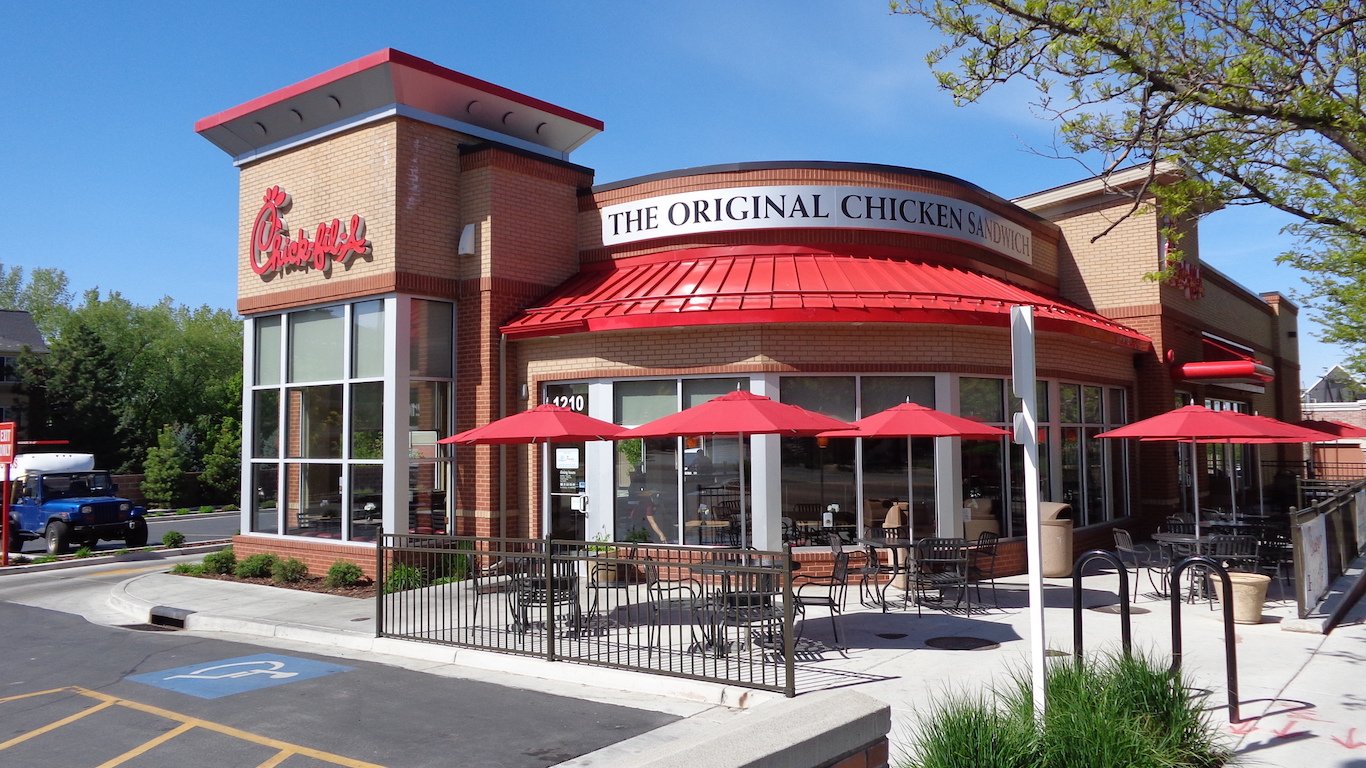
1. Chick-fil-A
> 2017 ACSI score: 87
> 2016 ACSI score: 87
> Revenue: $5.7 billion
> Profits: N/A
Chick-fil-A has found success in the U.S. despite not offering the classic beef burger, unlike many popular fast food franchises. Not that customers miss it with a plethora of chicken options ranging from sandwiches and wraps to nuggets and strips. Chick-fil-A scored an 87 in ACSI’s 2017 customer service survey, the highest among fast food chains, in part because of its devotion to customers’ needs. For example, the company listened to its customers’ requests and started an initiative to serve antibiotic-free chicken in all of its restaurants by 2019.
[in-text-ad]
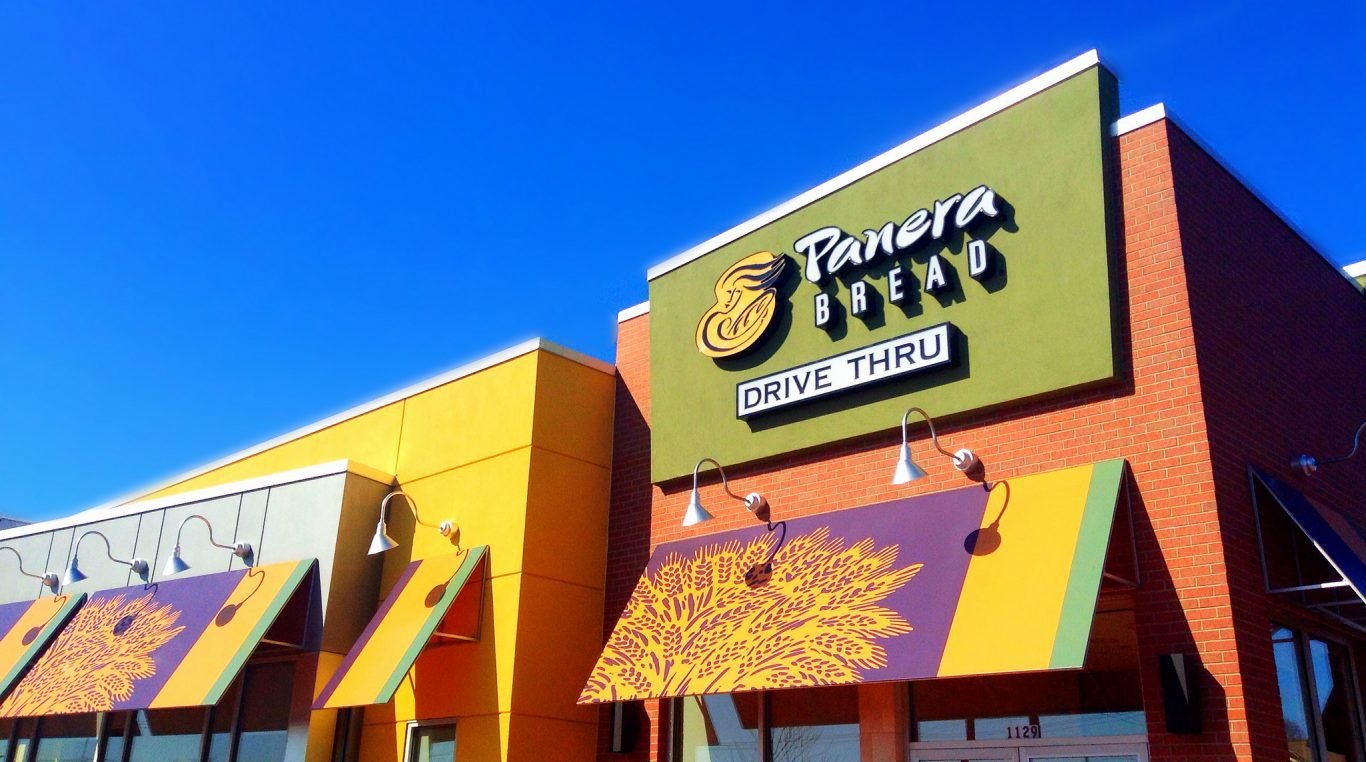
2. Panera Bread
> 2017 ACSI score: 82
> 2016 ACSI score: 81
> Revenue: $2.8 billion
> Profits: $145.2 million
Originally a part of Au Bon Pain Co., Inc, Panera Bread was spun off as a separate company in 1999. The company started out on the East Coast, and by September 2016, there were over 2,000 bakery-cafes spread across 46 states. Panera also listened to its customers, initiating plans to remove artificial colors, flavors, sweeteners, and preservatives from its food. Panera also initiated a slew of new ordering technologies, hoping for a smoother and speedier service. Perhaps these initiatives helped it earn the second highest score among limited service restaurants.
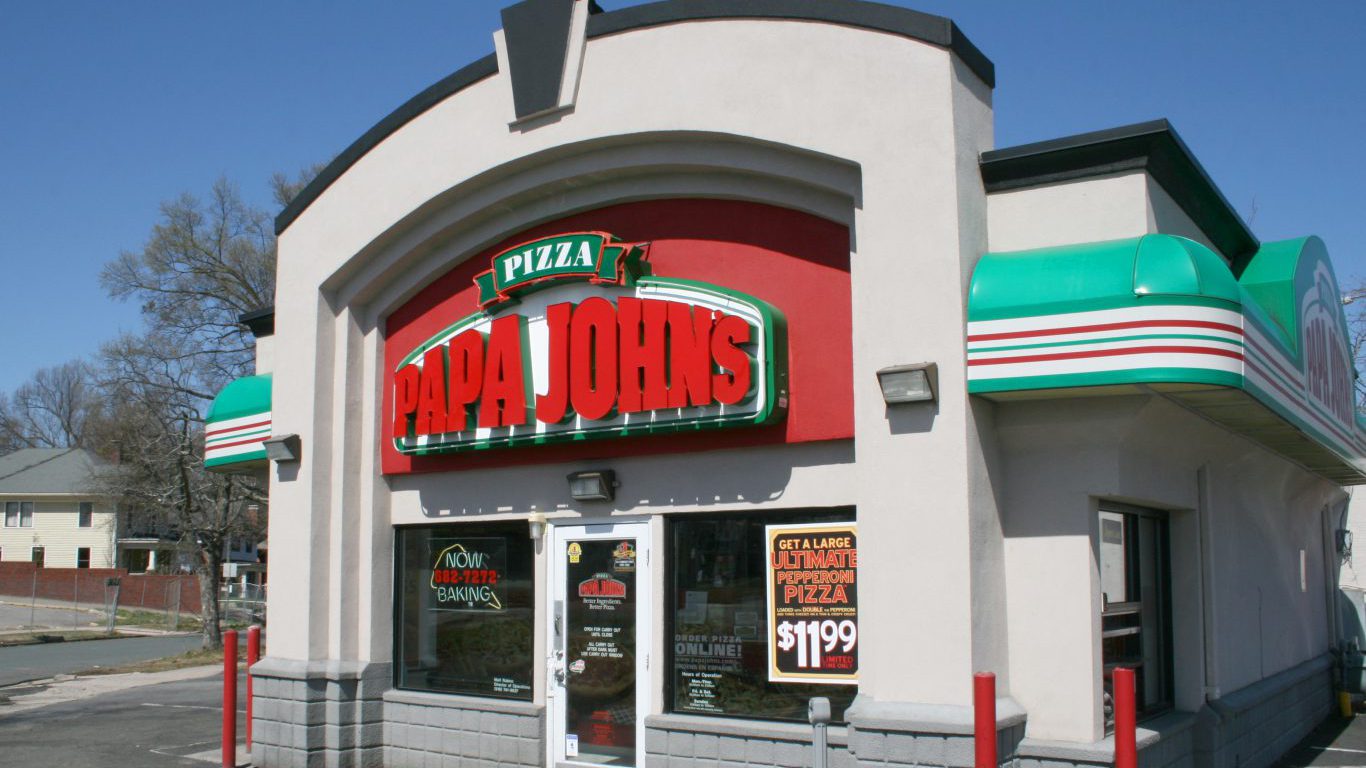
3. Papa John’s
> 2017 ACSI score: 82
> 2016 ACSI score: 82
> Revenue: $1.7 billion
> Profits: $102.8 million
“Better ingredients. Better Pizza.” And better service, too? For over 30 years, Papa John’s pizza has been catering to pizza lovers everywhere — in 45 different countries and territories to be exact. Great service paired with a killer pizza pie makes this limited-service restaurant a favorite to many.
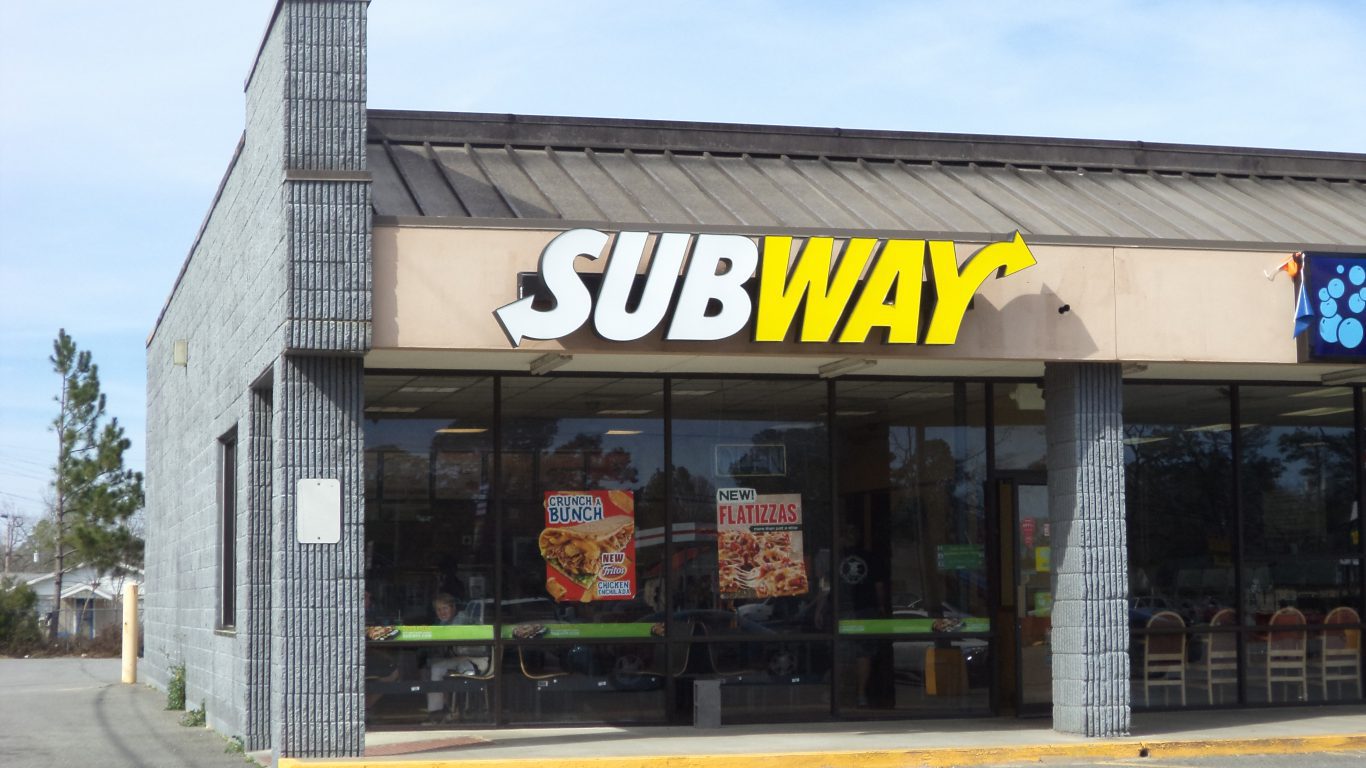
4. Subway
> 2017 ACSI score: 81
> 2016 ACSI score: 80
> Revenue: N/A
> Profits: N/A
For a fast food restaurant, Subway has developed an image as a somewhat healthier alternative among its fast food competitors. The company is partners with the American College of Cardiologists and sponsors many organizations and events that encourage walking in order to fight childhood obesity. The restaurant’s offerings also include a variety of vegetables and lean protein.
[in-text-ad-2]
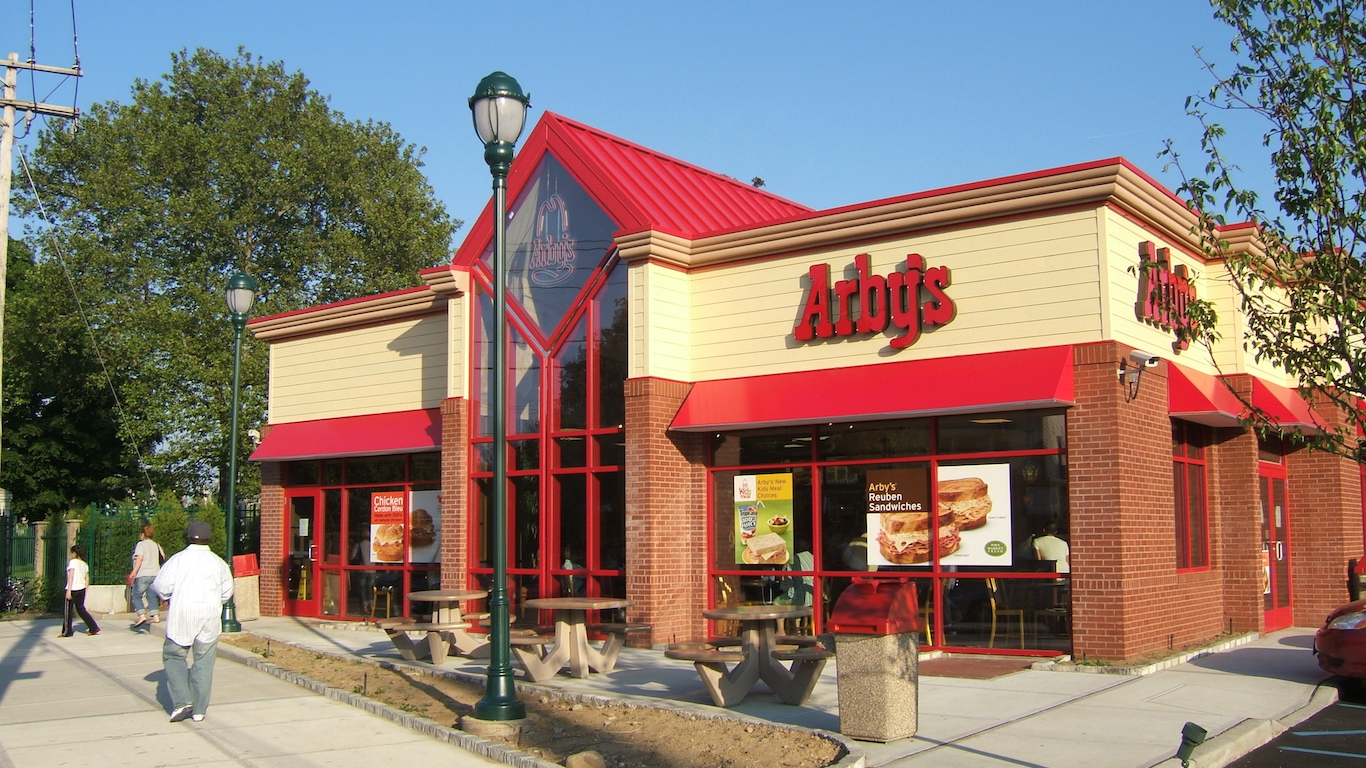
5. Arby’s
> 2017 ACSI score: 80
> 2016 ACSI score: 80
> Revenue: $3.6 billion
> Profits: N/A
The final fast food restaurant to score above the industry average, Arby’s has been making significant leaps and bounds since its massive drop in revenue between 2008 and 2010. In 2015, Arby’s revenue rose to $3.5 billion and then to $3.6 billion the year after. The company says it’s projected to hit $4 billion in revenue by 2018. If the company manages to maintain its strong customer satisfaction levels, that goal may be attainable.
6. Dunkin’ Donuts
> 2017 ACSI score: 79
> 2016 ACSI score: 80
> Revenue: $828.9 million
> Profits: $195.6 million
Scoring an industry average 79, Dunkin’ Donuts has seen an incredible increase in revenue over the past 10 years. Dunkin’ Brands, which owns and operates Dunkin’ Donuts and Baskin-Robbins, witnessed an increase of $312 million, a 60% jump in sales since 2007. The company’s bottom line might benefit from Dunkin’s superior customer service rating over main competitor Starbucks, which scores a 77. Unfortunately, Dunkin’ lost some ground over its rival in 2017, as its ACSI score dropped one point compared to 2016.
[in-text-ad]
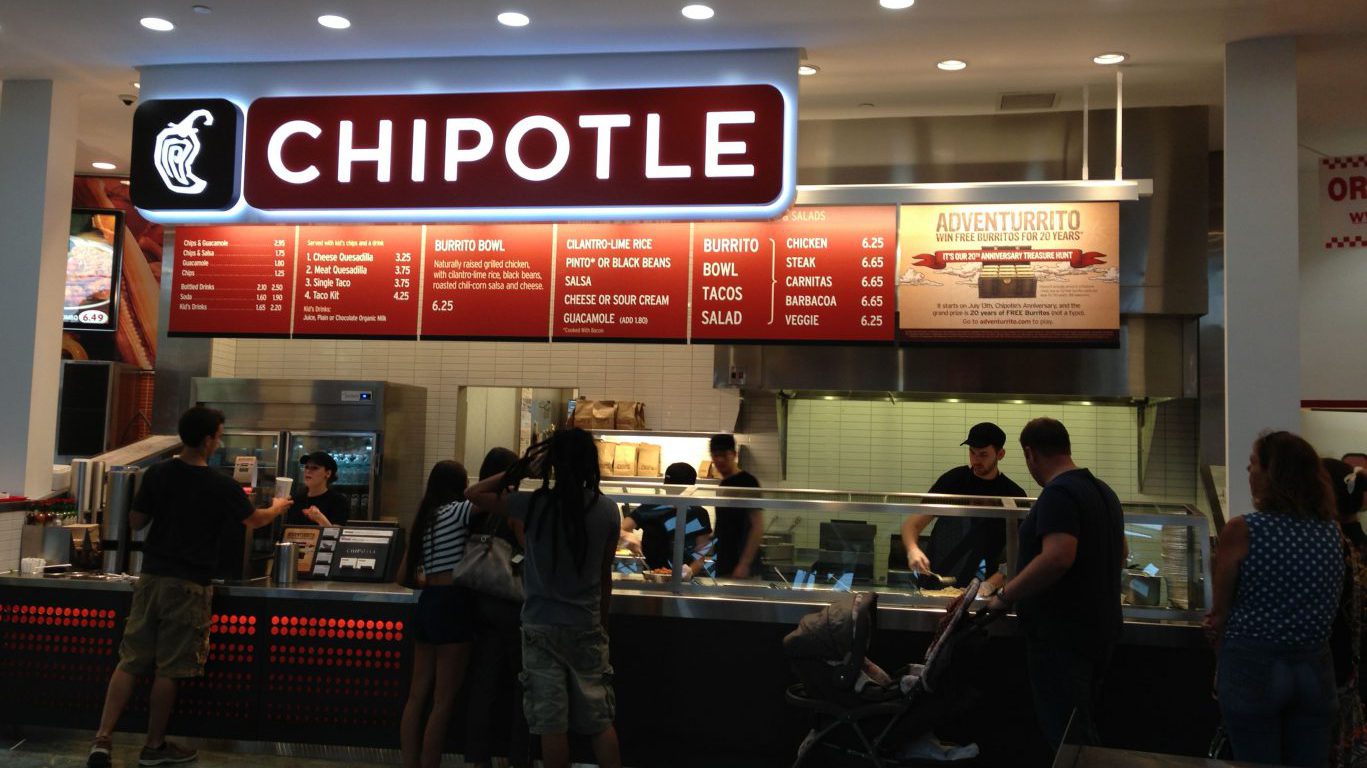
7. Chipotle Mexican Grill
> 2017 ACSI score: 79
> 2016 ACSI score: 78
> Revenue: $3.9 billion
> Profits: $22.9 million
It’s impressive that Chipotle made the average ACSI score for fast food chains considering its bout with an E.coli breakout in 2015. The company’s profits decreased by an astonishing 82% following the outbreak. The company’s ACSI score was 83 in 2015. It dropped to 78 by 2016, likely due at least in part to the outbreak. By 2017, however, the company is making a strong comeback with revenue, profits, and customer service rank all on the rise. The recovery may be short-lived, however, as a recent outbreak of norovirus was widely reported this month. An employee in Sterling, Virginia came back to work while still ill with the virus and, as a result, over 130 people suffered from food poisoning.
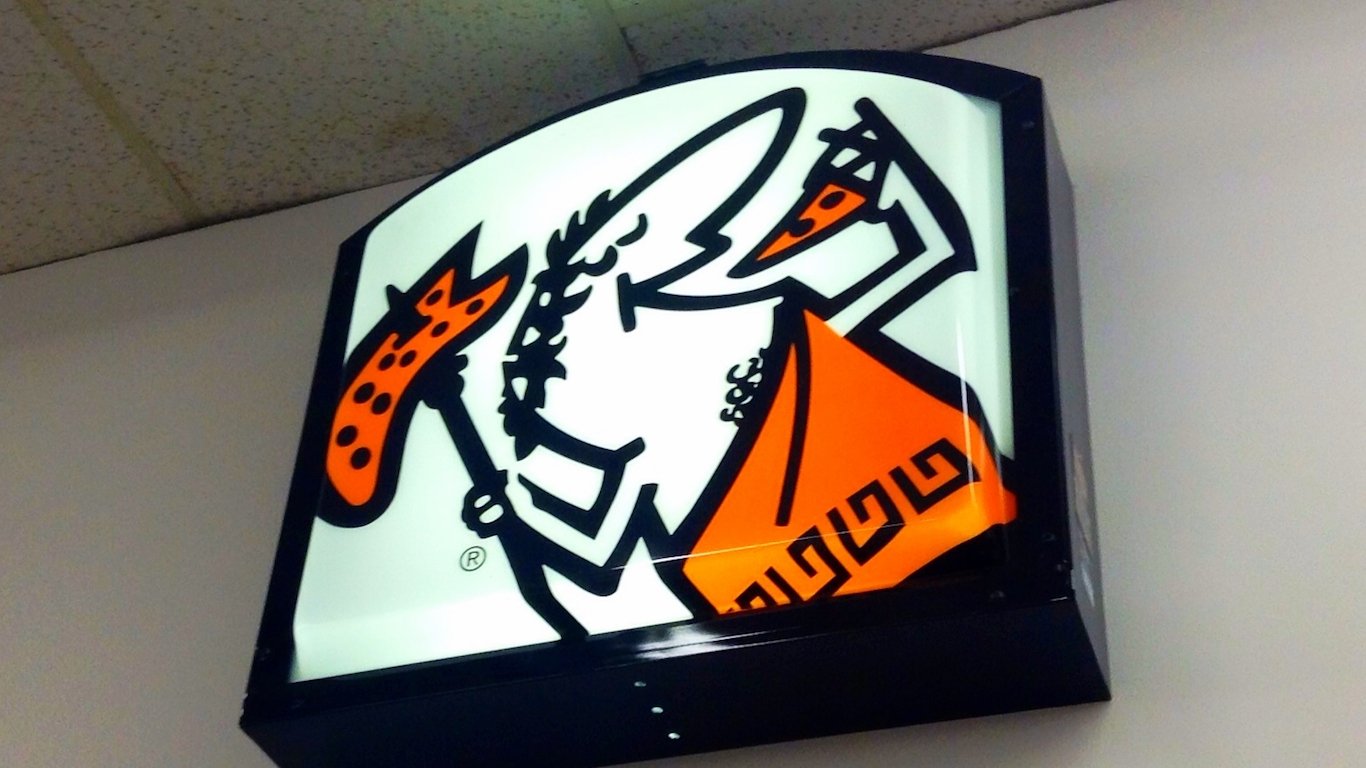
8. Little Caesars Pizza
> 2017 ACSI score: 78
> 2016 ACSI score: 81
> Revenue: $3.4 billion
> Profits: N/A
Little Caesars Pizza is owned by a large corporation called Ilitch Holdings, Inc., which also owns Blue Line Foodservice Distribution, Champion Foods, and the Detroit Red Wings, among other businesses.
After making considerable strides — the company’s ACSI score increased from 74 in 2015 to 81 in 2016 — Little Caesars faltered again this year. Sporting the largest decline in score of any fast food chain on this list, the pizza chain scored just 78 this year.
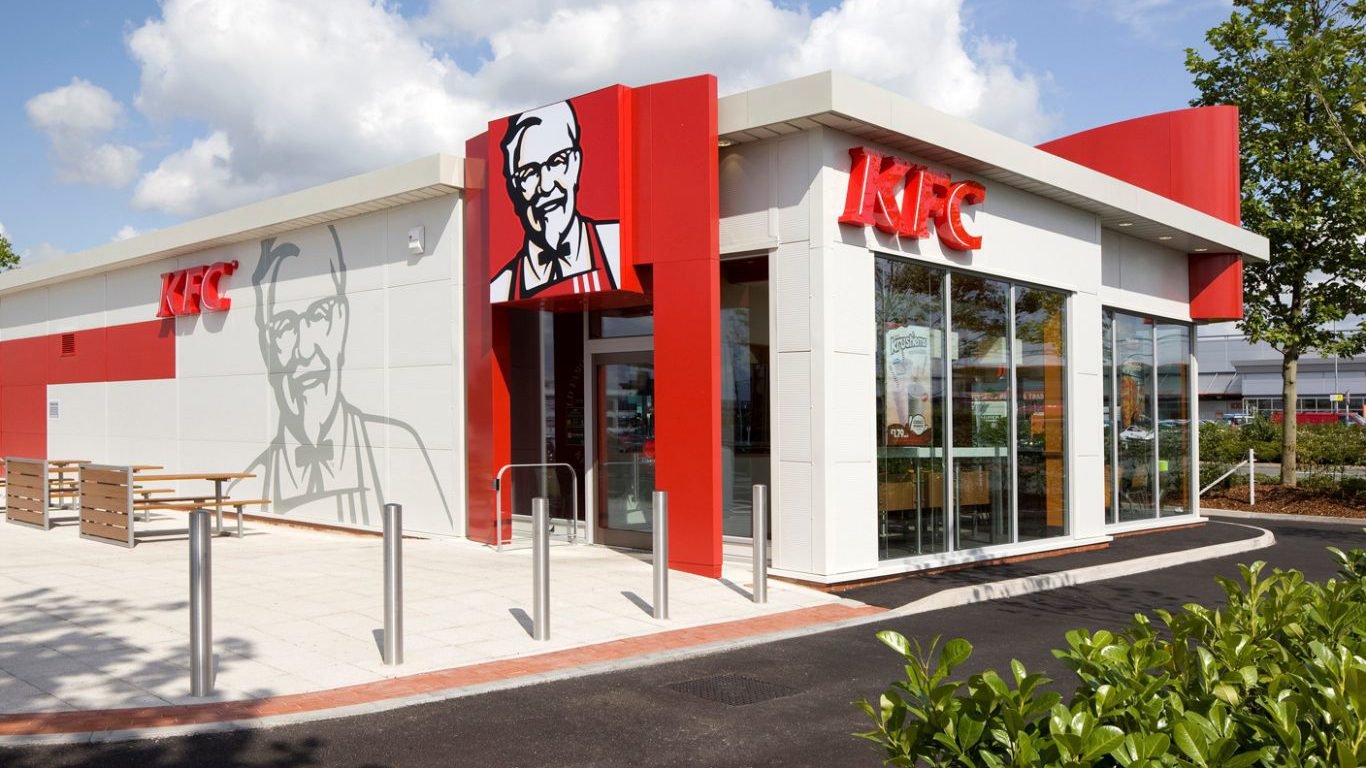
9. KFC (Yum! Brands)
> 2017 ACSI score: 78
> 2016 ACSI score: 78
> Revenue: $3.2 billion
> Profits: $874 million
Of the three Yum! Brands restaurant chains — KFC, Taco Bell, and Pizza Hut — KFC brings in the most revenue, nearly half of Yum! Brands’ total. While Colonel Sanders likely never envisioned something like this could happen, KFC is far more popular outside the U.S. than at home. People enjoy fried chicken in 20,604 KFC locations in 128 countries — and 80% of these locations are outside the United States.
This is not to say Americans don’t like their Kentucky Fried Chicken. U.S. customers tend be generally more satisfied with the level of service at KFC restaurants than in other chains. KFC scored higher on the ACSI than the majority of other fast food restaurants, including sister chains Taco Bell and Pizza Hut.
[in-text-ad-2]
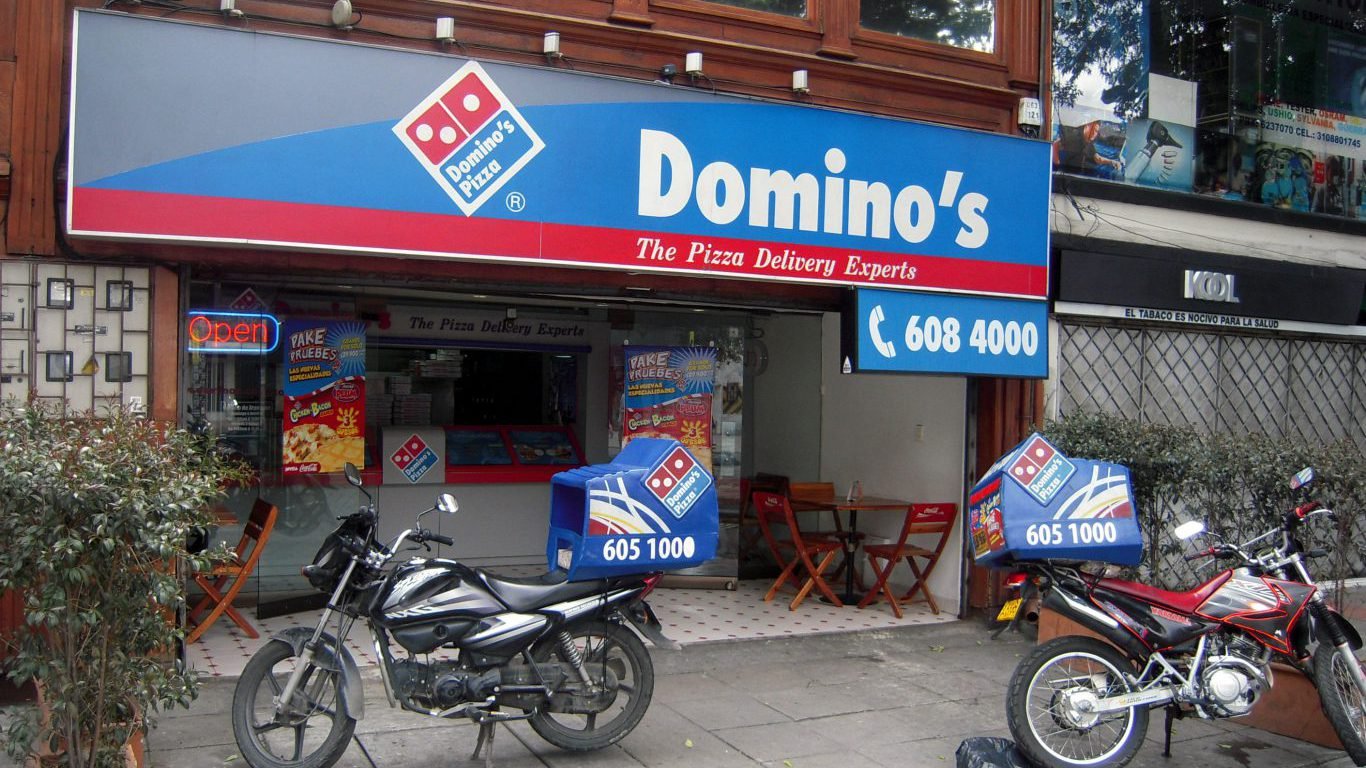
10. Domino’s
> 2017 ACSI score: 78
> 2016 ACSI score: 78
> Revenue: $2.5 billion
> Profits: $214.7 million
With over 13,800 locations around the globe, Domino’s is the second largest pizza restaurant chain in the world. The company sells more than 2 million pizzas every day in over 85 markets worldwide. The pizza chain’s customer satisfaction score remained flat between 2016 and 2017, at 78, just below the average across all limited service restaurants. The score has changed erratically over the years, but is up by 16.4% from 1994, the first year the survey was conducted. This is a relatively large improvement compared with other chains.

11. Starbucks
> 2017 ACSI score: 77
> 2016 ACSI score: 75
> Revenue: $21.3 billion
> Profits: $4.2 billion
While Starbucks’ score is below the average for fast food chains, the company managed to improve its customer service score from last year. In 2016 Starbucks received a score of 75. Whether you prefer to sip on a warm cup of Passion Tango tea or slurp down an icy Frappuccino, Starbucks has many Americans bustling through its doors daily. Yet the business’s customer service lags a bit in comparison to its financial success.
[in-text-ad]
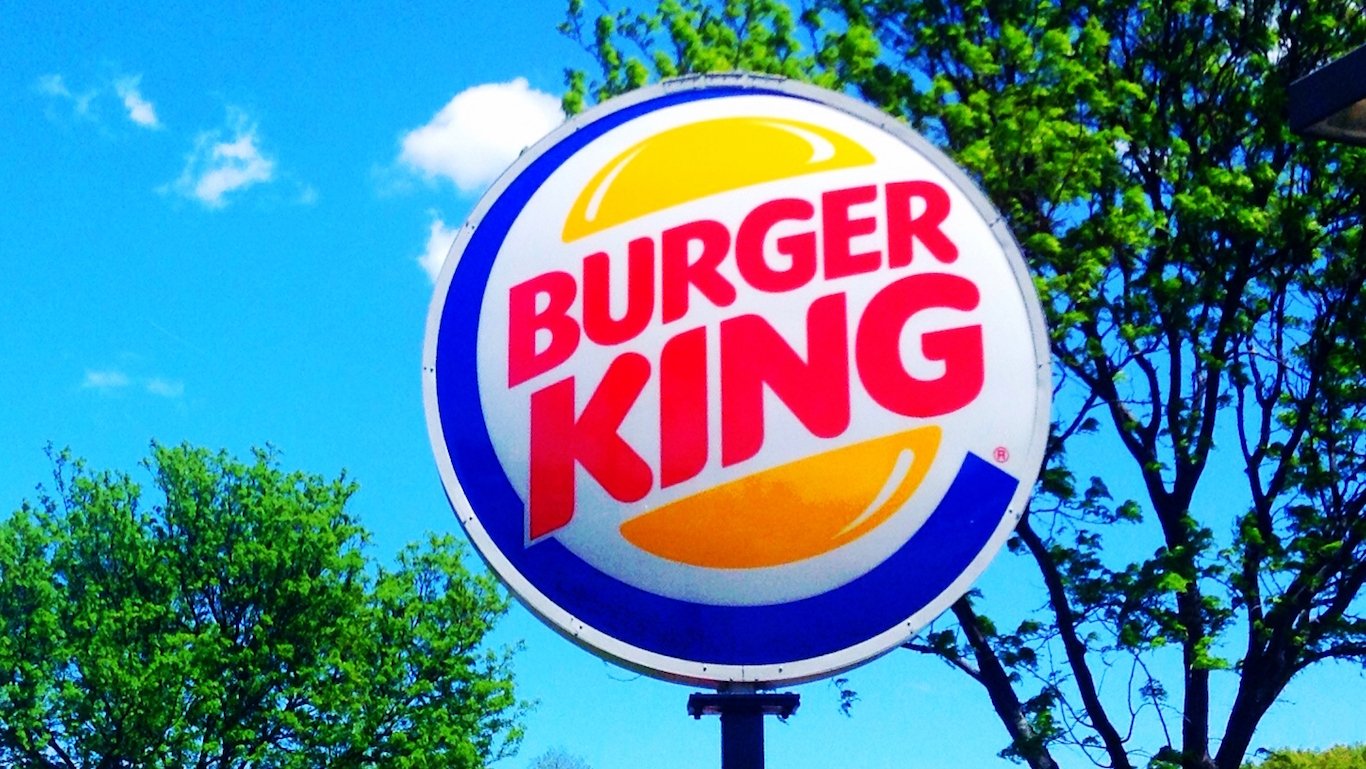
12. Burger King
> 2017 ACSI score: 77
> 2016 ACSI score: 76
> Revenue: $1.1 billion
> Profits: N/A
Burger King is one of three iconic fast food restaurants — alongside Tim Hortons and Popeyes — owned by Restaurant Brands International. The home of the Whopper did see a jump in ACSI score from 2016. Nevertheless, it still falls behind the average. Perhaps the young CEO of Restaurant Brands International, Daniel Schwartz, can help Burger King’s ACSI score rise again in the near future. The elimination of the Whopper advertisement on the Google Home — which backfired almost immediately– may also be advantageous to the restaurant’s likeability.
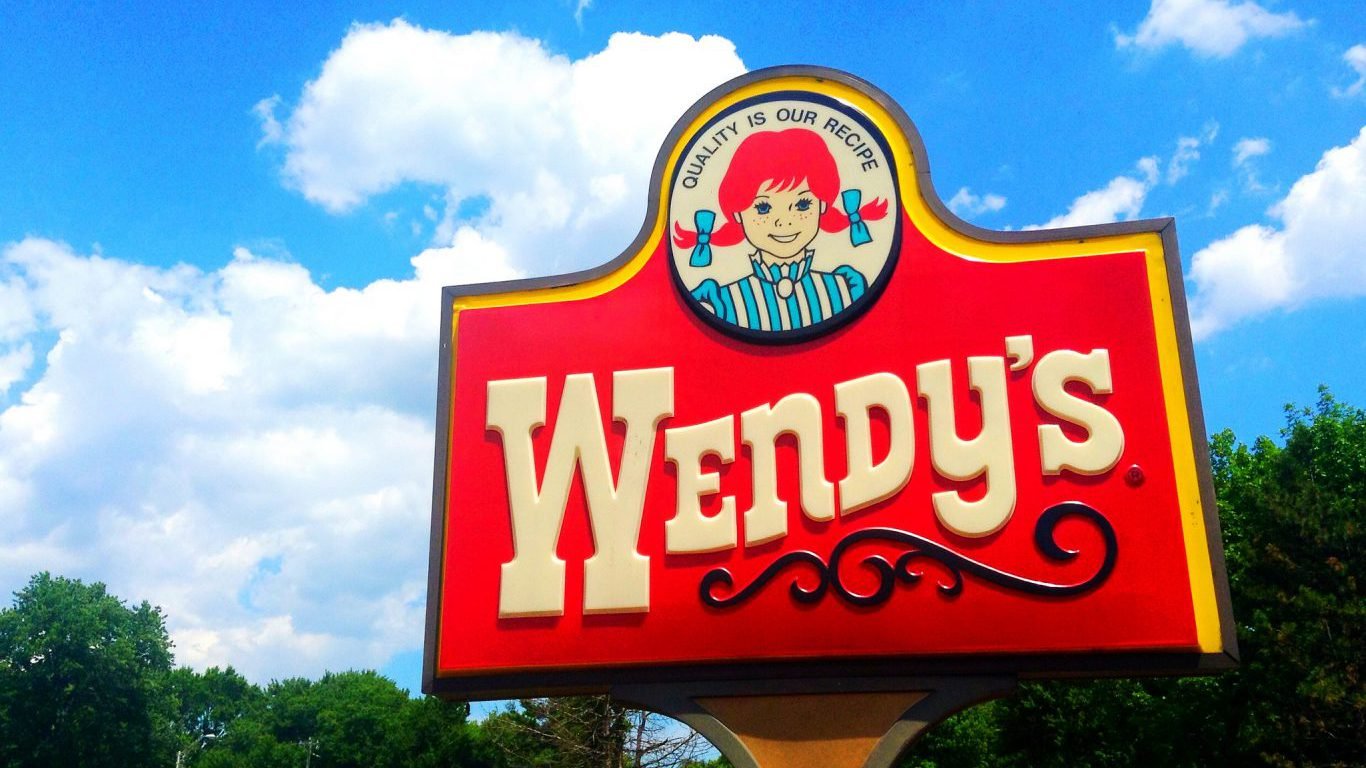
13. Wendy’s
> 2017 ACSI score: 76
> 2016 ACSI score: 76
> Revenue: $1.4 billion
> Profits: $129.6 million
Wendy’s Frosty may be irresistible, but its customer service is lagging behind. What’s more, the iconic burger chain’s recent 50-cent Frosty campaign, for some reason, needed a clarification. Some customers confused the summer’s half-price Frosty offering with an endorsement by artist 50 Cent. Wendy’s earned its highest score of 80 in both the years 2011 and 2013. Compared with other common fast food chains, Wendy’s store footprint is relatively small. There are only 6,537 restaurants around the world. McDonald’s and Burger King operate at least twice as many restaurants worldwide.
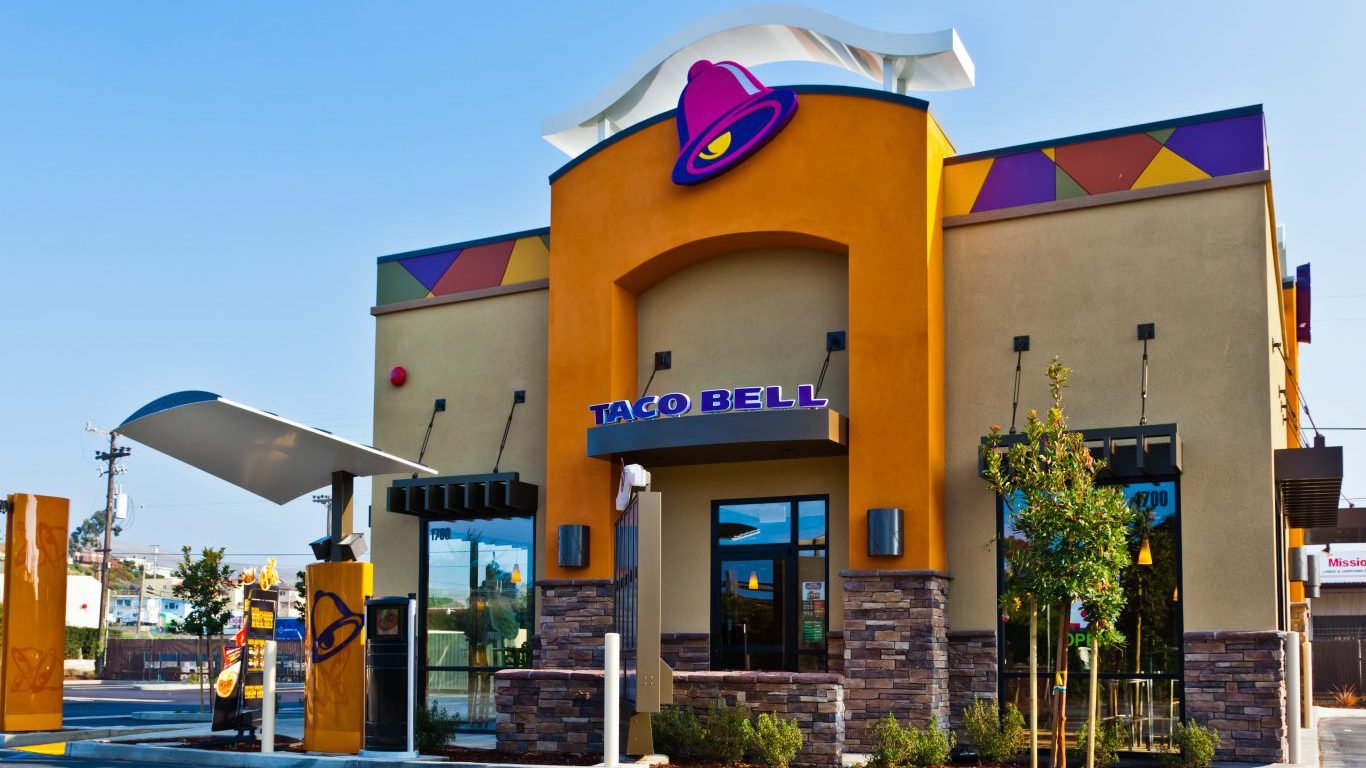
14. Taco Bell (Yum! Brands)
> 2017 ACSI score: 76
> 2016 ACSI score: 75
> Revenue: $2.0 billion
> Profits: $593.0 million
Of all the three fast food restaurants on this list owned by Yum! Brands, Taco Bell is the smallest with 6,064 restaurants spread across 22 countries. It’s easy to assume that all of Taco Bell’s options are toxic for your health with options like the Nacho Cheese Doritos Locos Tacos Supreme, where the taco shell is literally a giant Dorito. As part of its focus on healthier food, Taco Bell has recruited a registered dietitian that oversees the menu. R.D., Missy Schaaphok, developed the Power Menu which includes vegetarian and vegan ingredients. She also helped reduce sodium levels across the entire menu.
[in-text-ad-2]
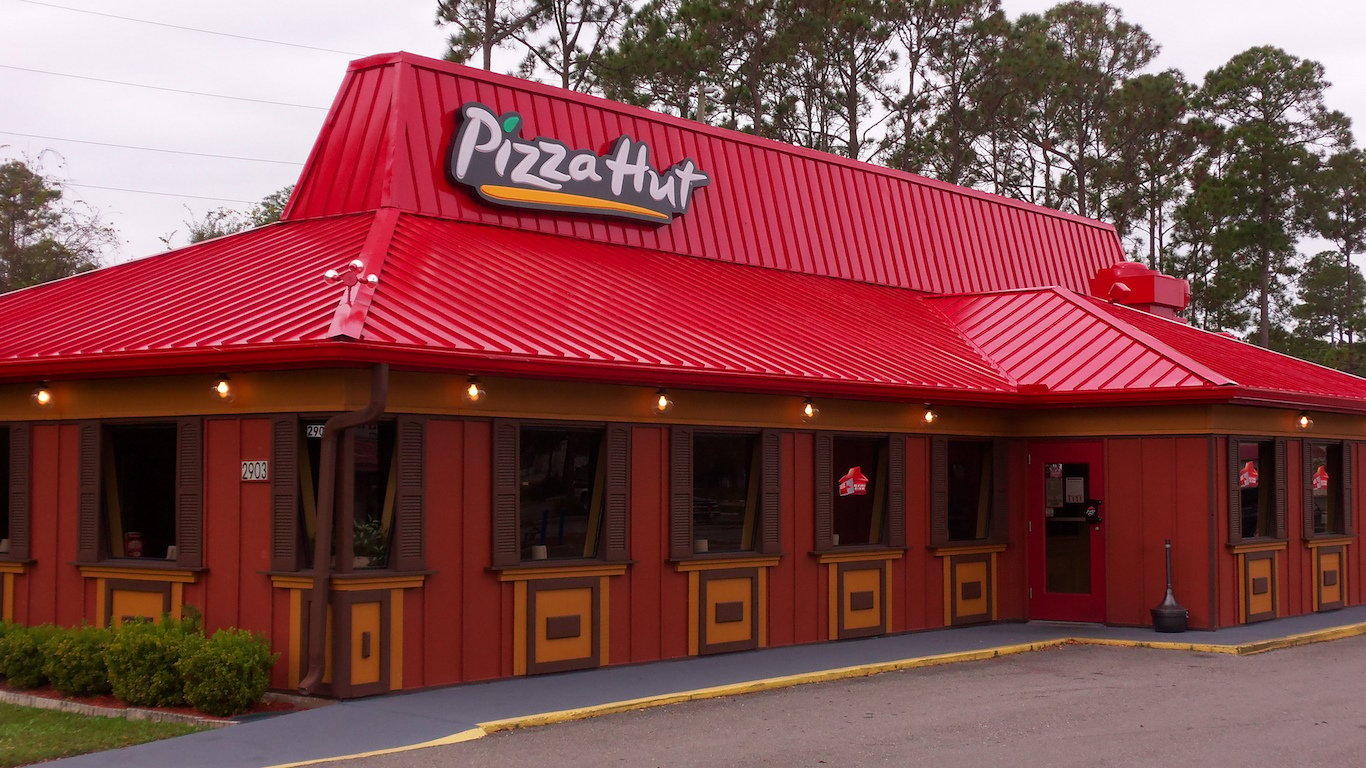
15. Pizza Hut (Yum! Brands)
> 2017 ACSI score: 76
> 2016 ACSI score: 77
> Revenue: $1.1 billion
> Profits: $370.0 million
Falling from its 2016 ACSI score of 77, Pizza Hut is now tied with Yum! Brands’ Taco Bell chain in customer satisfaction. Both restaurants rank behind KFC, another Yum! Brands restaurant, in overall customer satisfaction.
Yum! Brands wants to up Pizza Hut’s game with a $130 million investment. These finances will go toward upgrading equipment, improving restaurant technology and increased ad spending through 2018.

16. Jack in the Box
> 2017 ACSI score: 75
> 2016 ACSI score: 74
> Revenue: $1.6 billion
> Profits: $124.1 million
Unlike many other fast food chains on this list, Jack in the Box is concentrated in a few regions — almost all of the 2,260 locations are in California or Texas. If you’ve never been to a Jack in the Box, you may be in for a surprise. The menu is stacked with diverse options for a fast food restaurant. Burgers, tacos, breakfast food, and even a category called brunchfast is what you’ll have to choose from. Unfortunately, the quality of customer service falls behind the average score by four points.
[in-text-ad]
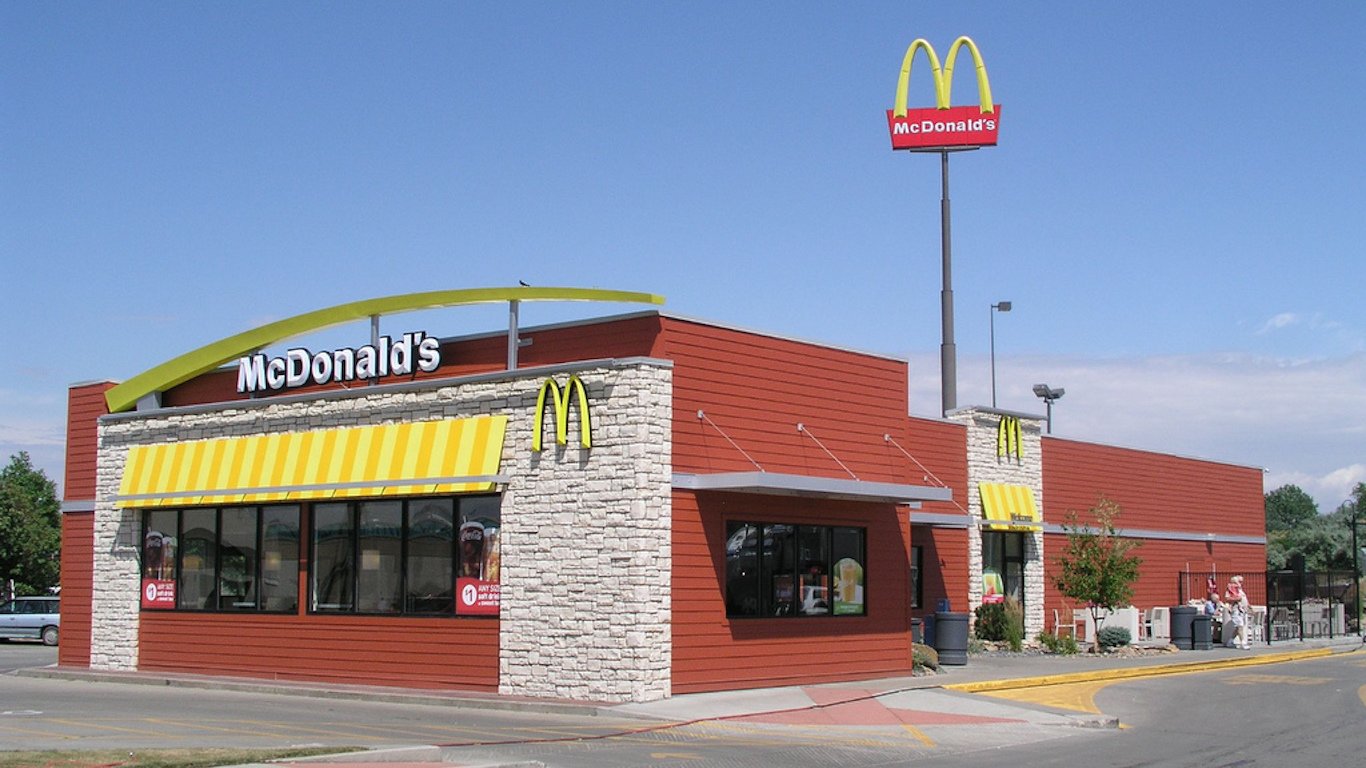
17. McDonald’s
> 2017 ACSI score: 69
> 2016 ACSI score: 69
> Revenue: $24.6 billion
> Profits: $4.7 billion
Worst customer service or not, McDonald’s has remained the most visited of U.S. restaurants. But foot traffic has been on the decline for years, and the company had to act to reverse the trend. There are 36,899 McDonald’s worldwide, but according to the ACSI, its customer satisfaction score has never been higher than 73 since 1994 when the ACSI started scoring fast food restaurants. With the help of cheaper drinks, fancy burgers, all-day breakfast, and higher-quality chicken, the chain has recently managed to boost traffic and sales. And to tackle sometimes long, slow lines, McDonald’s installed store kiosks and partnered with Uber for some delivery services.
A financial advisor can help you understand the advantages and disadvantages of investment properties. Finding a qualified financial advisor doesn’t have to be hard. SmartAsset’s free tool matches you with up to three financial advisors who serve your area, and you can interview your advisor matches at no cost to decide which one is right for you. If you’re ready to find an advisor who can help you achieve your financial goals, get started now.
Investing in real estate can diversify your portfolio. But expanding your horizons may add additional costs. If you’re an investor looking to minimize expenses, consider checking out online brokerages. They often offer low investment fees, helping you maximize your profit.
Thank you for reading! Have some feedback for us?
Contact the 24/7 Wall St. editorial team.